Our 2019 Fall Convention is scheduled for Friday, September 20, 2019 at the Crowne Plaza in Natick, MA. Our guest speakers include Dr. Natalie Phillips and Donald Schum,PhD.
View Conference Schedule
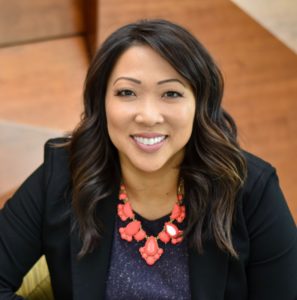 Dr. Natalie Phillips is the Senior Audiologist with Advanced Otolaryngology and Audiology in Fort Collins, Colorado. Dr. Phillips has served on the Board of Directors for the Colorado Academy of Audiology and on various convention committees for the American Academy of Audiology as well as the Support Personnel Task Force. Dr. Phillips served on the Legacy Project Steering Committee and is a Global Ambassador Emeritus for Empowering A Billion Women by 2020 (EBW2020), a global initiative and movement to provide the tools, technology, and resources to empower women as leaders and successful entrepreneurs.
Dr. Natalie Phillips is the Senior Audiologist with Advanced Otolaryngology and Audiology in Fort Collins, Colorado. Dr. Phillips has served on the Board of Directors for the Colorado Academy of Audiology and on various convention committees for the American Academy of Audiology as well as the Support Personnel Task Force. Dr. Phillips served on the Legacy Project Steering Committee and is a Global Ambassador Emeritus for Empowering A Billion Women by 2020 (EBW2020), a global initiative and movement to provide the tools, technology, and resources to empower women as leaders and successful entrepreneurs.
Dr. Phillips has experience developing early hearing detection programs in various hospitals throughout the state of Texas. Her work then took her to Southern California, where she collaborated with a neurotologist, taking over the practice of Dr. William House. She has participated in research within the field of audiology, including cochlear implants, tinnitus devices and a fully implantable hearing system. Dr. Phillips is particularly interested in tinnitus and has been providing tinnitus and sound sensitivity therapy options to patients for the past 19 years. In addition to seeing patients and being involved in research and on clinical advisory boards,she continues to pursue opportunities to participate in humanitarian audiology as well as believes in connecting with people both inside and outside of the hearing industry to be able to make a bigger impact in the world.
Dr. Natalie Phillips is passionate about building deep relationships and authentic connections to help make a difference in the world together. She is committed to assisting individuals and businesses to become more of who they are and to live out their brand. She believes in creating environments in which people can connect on different levels to help their businesses succeed. She created and is Founder and CEO of Connect4Excellence, LLC, a company dedicated to guide individuals, entrepreneurs, and businesses to connect to their own mission and culture, to connect to others at organized events, to connect to their own voice with a bigger audience on social media, and to connect to be able to give back and create social impact. She is also host of Connecting A Better World, a podcast aimed to connect people to listen, learn, and spark interest and empowerment in how they themselves see what they can bring forth to make this world a better place.
Synopsis of Classes:
Managing the Patient with Tinnitus and Sound Sensitivity
Download the Presentation Slides
We all have of patients who come in to us saying they have tinnitus. Is it constant? Is it bothersome? Does it affect sleep patterns at night? Is there an underlying medical issue? As Audiologists, we are familiar with tinnitus and are even given tools from manufacturers to help minimize tinnitus, but how comfortable are you in evaluating and managing different levels of tinnitus and/or sound sensitivity issues that may be present? In this presentation, we will discuss patients with different levels of tinnitus and sound sensitivity issues as well as hearing loss. We will review methods to evaluate these patients including useful questionnaires and a testing paradigm to benchmark outcomes. We will spend time discussing common myths of working with these patients as well as consider how to set up a portion of your practice as a “tinnitus clinic”. Finally, case studies will be presented to prepare you for the next time a patient with tinnitus or sound sensitivity walks into your clinic.
Learning objectives:Upon completing this course, attendees will be able to …
1) Identify different levels of patients who present with tinnitus and sound sensitivity issues and understand WHY it is important to evaluate and look at the WHOLE otologic picture.
2) Understand and choose successful options or know when to refer for management and treatment of these patients.
3) Evaluate tinnitus and sound sensitivity patients using appropriate methods and tools.
4) Present as competent and knowledgeable health professionals to increase practice revenue as well as direct referrals from physicians.
Finding Your Voice on Social Media
Download the Presentation Slides
Social media is an effective (and relatively inexpensive), creative, and personal tool to both build new and maintain customer communication and engagement. This course will discuss how social media can benefit your hearing care business and review a simple process to get started on building that connection.
Learning Outcomes
1) After this course, participants will be able to describe a quick process to get their professional profile and/or hearing care business out on social media
2) After this course, participants will be able to identify the social media platform(s) that is a right fit for their professional image and/or hearing care business.
3) After this course, participants will be able to list ways that social media can benefit their hearing care practice/business.
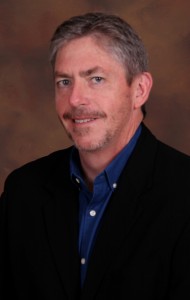
Don Schum, PhD currently serves as Vice President, Audiology for Oticon, Inc. Previous to his position at Oticon in Somerset, Don served as the Director of Audiology for the main Oticon office in Copenhagen Denmark. In addition, he served as the Director of the Hearing Aid Lab at the University of Iowa School of Medicine (1990-1995) and as an Assistant Professor at the Medical University of South Carolina (1988-1990). During his professional career, Dr. Schum has been an active researcher in the areas of Hearing Aids, Speech Understanding, and Outcome Measures. (B.S. in Speech & Hearing Science, University of Illinois; M.A. in Audiology, University of Iowa; Ph.D. in Audiology, Louisiana State University.)
Class Synopsis:
"The Future of Connected Hearing Healthcare"
Neither the hearing care professional or the patient is isolated anymore. Rapid advances in connected health care in general is now entering the realm of hearing care. Although potentially complicated or even threatening, these changes in the hearing health care environment can also bring great advantages in both patient care and practice growth. In this presentation, we will walk through some of the new horizons and terminology that is now becoming part of our field and provide a perspective on the opportunities.
Learner outcomes:
1) Recognize and define the key terminology that typifies connected healthcare.
2)List the benefits to the patient that will come with greater connected hearing healthcare.
3) List three examples of how hearing aid dispensing is changing due to connected hearing healthcare.
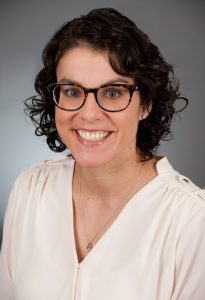
Amanda Griffin, AuD, PhD, currently serves as the Director of Audiology Research at Boston Children's Hospital. Her principal research interests include pediatric unilateral hearing loss and cochlear implants. In addition to her research endeavors, she also provides clinical audiological services to patients in the Cochlear Implant Program at Boston Children’s at Waltham. Dr. Griffin is a proud graduate of the University of Massachusetts, Amherst where she earned her BS in Communication Disorders, as well as both her clinical and research doctorates in audiology under the co-advisement of Sarah Poissant, PhD, and Richard Freyman, PhD.
Course Overview:
"Audiological management of pediatric single-sided deafness: so many options, but where is the evidence? "
Course will review recent research findings as well as discuss an illustrative case study on the efficacy of hearing devices indicated for the management of severe-profound unilateral hearing loss including: air conduction CROS hearing aid, bone-anchored hearing system, remote microphone hearing aid, and cochlear implant.
Study Details:
It is becoming more evident that children with unilateral hearing loss (UHL) are at risk for deficits in speech understanding in challenging listening environments and sound localization, speech and language delays, academic underachievement, behavioral problems, and decreased quality of life. Although past studies have clearly illustrated that widespread clinical deficits exist in this population, there are insufficient pediatric data to recommend one treatment method over another. Management approaches vary widely and outcomes do as well. This is especially the case for the most severe type of UHL, single-sided deafness (SSD). Clinical practice within this population ranges from no treatment to surgical cochlear implantation, the latter of which is still an experimental procedure in the United States for patients with SSD. Between these two extremes are approaches that use a variety of hearing devices to route sound to the child’s normal hearing (NH)-ear. The limited studies that have examined hearing performance with devices indicated for patients with SSD have been small in scale, used older technologies, have largely been conducted in adults, and have focused on performance in two specific listening conditions. Given every day listening environments are dynamic, unpredictable, and complex, two static listening conditions make up an extremely small subset of the possible listening scenarios encountered in the real world. How children with UHL function in real-world listening environments, with and without the use of current hearing devices, is not well understood and has been challenging to evaluate. In the current study a variety of non-surgical hearing devices, indicated for children with SSD, were evaluated under realistic listening conditions using the R-SPACE Sound System. Speech-in-noise abilities of all participants with SSD were evaluated when using a 1) contralateral routing of signal (CROS) hearing aid system, 2) bone-anchored hearing system (BAHS) fitted on a softband, 3) BAHS in conjunction with a remote microphone, and 4) remote microphone hearing aid system.
Expected Learning Outcomes:
- List all possible audiological management options for children with single-sided deafness.
- Describe the current level of evidence to support each management option.
- Consider ways to clinically evaluate hearing device efficacy in patients with unilateral hearing loss.
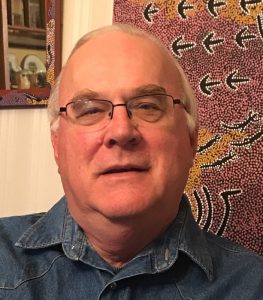 Geoff Plant, OAM, has worked with people with hearing loss (HL) for almost 50 years. He started work as a teacher of children with multiple disabilities in his native Australia, and in 1974 joined the National Acoustic Laboratories (NAL) where he worked developing test and training procedures for children and adults with HL. He conducted research into auditory, visual, and auditory-visual speech perception by adults and children with HL. He also worked extensively in research into the effects of acquired deafness on speech production, the use of vibrotactile aids with children and adults, and the development of speech test procedures in Aboriginal languages. In 1992, he was awarded the Medal of the Order of Australia for his "services to hearing-impaired people." During the 1980s and early 1990s, he worked for around two years in the Speech Communication Research Department at the Royal Institute of Technology in Stockholm, Sweden. Geoff came to the US in 1993 as a Visiting Scientist at MIT. He also worked on the development of better vibrotactile aids at Audiological Engineering Corporation. He joined MED-EL in 2001 and was a Rehabilitation Specialist for the company until 2015. During that time, he developed a large number of training programs for children and adults with cochlear implants. In 1996, Geoff set up the Hearing Rehabilitation Foundation (HRF) to provide and promote speech communication training. Since his "retirement," he has worked as a full-time volunteer at the HRF and currently sees around six adults each work for 1:1 training. He also provides monthly group sessions for older adults. These FIKA (Fostering Improved Kommunication Abilities) sessions offer the opportunity to meet and exchange ideas, questions, and experiences with others who are "in the same boat." Geoff has been a provider and advocate for adult aural rehabilitation for over 40 years, and believes that it is essential that audiology goes back to its roots and once again, provides such services.
Geoff Plant, OAM, has worked with people with hearing loss (HL) for almost 50 years. He started work as a teacher of children with multiple disabilities in his native Australia, and in 1974 joined the National Acoustic Laboratories (NAL) where he worked developing test and training procedures for children and adults with HL. He conducted research into auditory, visual, and auditory-visual speech perception by adults and children with HL. He also worked extensively in research into the effects of acquired deafness on speech production, the use of vibrotactile aids with children and adults, and the development of speech test procedures in Aboriginal languages. In 1992, he was awarded the Medal of the Order of Australia for his "services to hearing-impaired people." During the 1980s and early 1990s, he worked for around two years in the Speech Communication Research Department at the Royal Institute of Technology in Stockholm, Sweden. Geoff came to the US in 1993 as a Visiting Scientist at MIT. He also worked on the development of better vibrotactile aids at Audiological Engineering Corporation. He joined MED-EL in 2001 and was a Rehabilitation Specialist for the company until 2015. During that time, he developed a large number of training programs for children and adults with cochlear implants. In 1996, Geoff set up the Hearing Rehabilitation Foundation (HRF) to provide and promote speech communication training. Since his "retirement," he has worked as a full-time volunteer at the HRF and currently sees around six adults each work for 1:1 training. He also provides monthly group sessions for older adults. These FIKA (Fostering Improved Kommunication Abilities) sessions offer the opportunity to meet and exchange ideas, questions, and experiences with others who are "in the same boat." Geoff has been a provider and advocate for adult aural rehabilitation for over 40 years, and believes that it is essential that audiology goes back to its roots and once again, provides such services.
Course Summary
“Aural Rehab Matters”
Download the Presentation Slides
Despite incredible developments in hearing aids (HAs) and cochlear implants (CIs) over the past decades, adults with HL need more than technology. Even with the best-fit technology, many adults struggle to cope with speech understanding. This presentation will focus on the types of training -- auditory training, auditory-visual training, and information support -- provided by the Hearing Rehabilitation Foundation in Woburn, MA. Adults with CIs and HAs attend for 1:1 two-hour weekly sessions. The types of training materials used will be described, and a case study will show the value of such training. There will also be a short discussion of the need for on-going training and support to maintain a high level of "auditory fitness."
LEARNING OBJECTIVES
Upon completion participants will be able to:
1.)Describe the use of the KTH Tracking Procedure with adults with CIs and/or hearing aids.
2.) Describe a technique requiring adults with hearing loss to identify consonants presented in nonsense syllables.
3.) Summarize the findings of the results obtained with adults attending for long-term training.
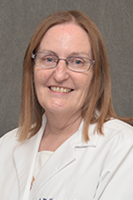 With more than 37 years of experience in audiology, Ann-Marie Hennessey has been with Mass. Eye and Ear for 28 years. She started her professional career in New York City working for the Lexington School for the Deaf. She managed a mobile hearing van that visited senior centers, health fairs, and completed annual hearing testing for the Yeshiva Parochial school systems in all five boroughs. In 1989, she returned to her New England roots and joined Mass. Eye and Ear when cochlear implants were first coming into the market. Ann-Marie has since expanded her knowledge of programming and supporting children and adults with this technology.
With more than 37 years of experience in audiology, Ann-Marie Hennessey has been with Mass. Eye and Ear for 28 years. She started her professional career in New York City working for the Lexington School for the Deaf. She managed a mobile hearing van that visited senior centers, health fairs, and completed annual hearing testing for the Yeshiva Parochial school systems in all five boroughs. In 1989, she returned to her New England roots and joined Mass. Eye and Ear when cochlear implants were first coming into the market. Ann-Marie has since expanded her knowledge of programming and supporting children and adults with this technology.
Ann-Marie has experience with all three commercial cochlear implant (CI) manufacturers. One of her greatest joys is working with adults with severe hearing loss who choose to undergo CI surgery. When patients acclimate to the device and begin to hear, she finds the personality that has been hidden by difficulty communicating. She also enjoys the first words of a child born with profound hearing loss following cochlear implantation.
Topic Summary:
“TRANSITIONING FROM TRADITIONAL HEARING AIDS TO COCHLEAR IMPLANT”
Hearing aid users with a progressive hearing loss may find they no longer receive the same benefit from amplification. It maybe from insufficient gain or the inability to understand speech even when the words are loud enough. The transition can be difficult to navigate for the patient and their families, and clinicians. Patients with sudden hearing loss that does not respond to traditional treatment with or without tinnitus can benefit from implants.
I will talk about when and how to start the conversation, including the internal device and the external processor. A review of CI evaluation including pure tone testing and word recognition. A little history of sentence tests vs monosyllable. A review of pre CI and post audiograms. Finally how to counsel patients on expectations of outcome post CI and factors that contribute to s poor outcomes.
Learner Objectives:
- Name three indications that a patient might benefit from a cochlear implant.
- Name a reason why an ear may not benefit from a cochlear implant.
- Name one exercise that will help a CI user to acclimate to the CI stimulation.
 Todd Sauter, M.A.,F-AAA, is the owner of Audiology Associates of Worcester since 2014. Previous positions include audiology director at UMass Memorial Medical Center, and audiologist at Massachusetts Eye & Ear Infirmary. He has served as an adjunct faculty member at Northeastern University and Worcester State University, and has given invited seminars and presentations in 17 countries around the world
Todd Sauter, M.A.,F-AAA, is the owner of Audiology Associates of Worcester since 2014. Previous positions include audiology director at UMass Memorial Medical Center, and audiologist at Massachusetts Eye & Ear Infirmary. He has served as an adjunct faculty member at Northeastern University and Worcester State University, and has given invited seminars and presentations in 17 countries around the world
Topic Summary:
“Devil in the Details: Finding Special Problems in Routine Audiometry”
Nearly all clinical audiologists perform routine audiometry on a daily basis, but how often do unique pathologies go unnoticed? This talk will review the “routine” test battery for adults and use case studies to demonstrate how subtle hints in test results can be the first step in identifying larger otologic conditions.
Attendees will be able to:
- List the components of an updated “routine” adult audiometric test battery.
- List 3 types of audiometric results which may influence decisions to refer.
- Describe simple adjustments to make traditional audiometry more sensitive.
The Massachusetts Academy of Audiology would like to thank the following sponsors:
Platinum Sponsor

Gold Sponsors


 Silver Sponsors
Silver Sponsors










